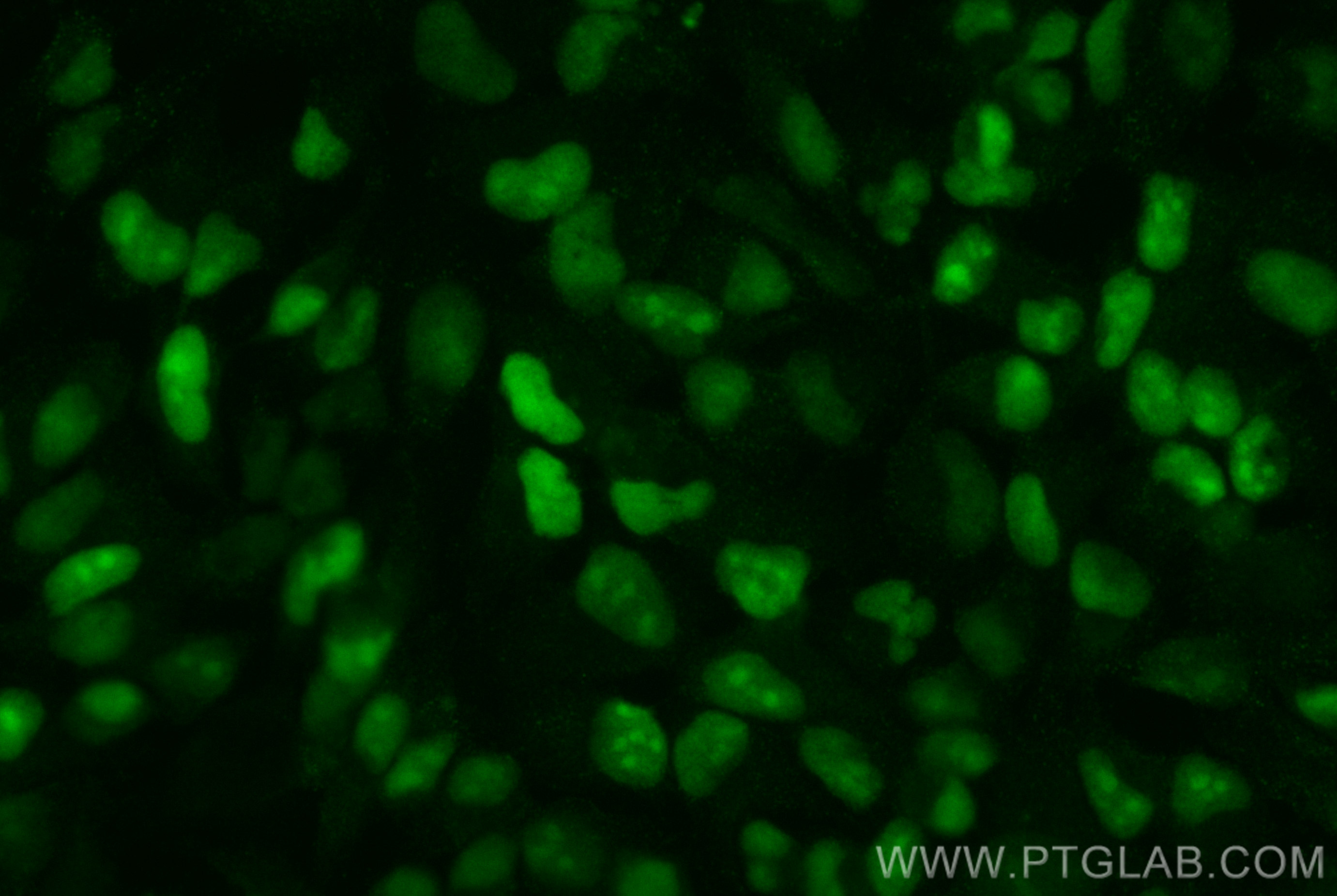验证数据展示
经过测试的应用
| Positive IF/ICC detected in | HeLa cells |
推荐稀释比
| 应用 | 推荐稀释比 |
|---|---|
| Immunofluorescence (IF)/ICC | IF/ICC : 1:200-1:800 |
| It is recommended that this reagent should be titrated in each testing system to obtain optimal results. | |
| Sample-dependent, Check data in validation data gallery. | |
产品信息
CL488-67790 targets IFI16 in IF/ICC applications and shows reactivity with Human samples.
| 经测试应用 | IF/ICC Application Description |
| 经测试反应性 | Human |
| 免疫原 | IFI16 fusion protein Ag30314 种属同源性预测 |
| 宿主/亚型 | Mouse / IgG1 |
| 抗体类别 | Monoclonal |
| 产品类型 | Antibody |
| 全称 | interferon, gamma-inducible protein 16 |
| 别名 | Ifi 16, IFI16, IFNGIP1, PYHIN2 |
| 计算分子量 | 729 aa, 82 kDa |
| 观测分子量 | 85-95 kDa |
| GenBank蛋白编号 | BC017059 |
| 基因名称 | IFI16 |
| Gene ID (NCBI) | 3428 |
| RRID | AB_3084378 |
| 偶联类型 | CoraLite® Plus 488 Fluorescent Dye |
| 最大激发/发射波长 | 493 nm / 522 nm |
| 形式 | Liquid |
| 纯化方式 | Protein G purification |
| UNIPROT ID | Q16666 |
| 储存缓冲液 | PBS with 50% glycerol, 0.05% Proclin300, 0.5% BSA , pH 7.3 |
| 储存条件 | Store at -20°C. Avoid exposure to light. Stable for one year after shipment. Aliquoting is unnecessary for -20oC storage. |
背景介绍
IFI16 is a member of a family of interferon-inducible nuclear proteins involved in transcriptional regulation functions as a transcriptional repressor. IFI16 may be involved in TP53-mediated transcriptional activation by enhancing TP53 sequence-specific DNA binding and modulating TP53 phosphorylation status. It has been reported that IFI16 participates in the regulation of autophagy, TP53-mediated cell death and innate immune response.
实验方案
| Product Specific Protocols | |
|---|---|
| IF protocol for CL Plus 488 IFI16 antibody CL488-67790 | Download protocol |
| Standard Protocols | |
|---|---|
| Click here to view our Standard Protocols |
